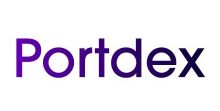Asset Tokenisation & CBDC R & D
Distributed ledger technologies offer a robust framework for improving financial transactions monitoring and control through enhanced transparency, automation, and security mechanisms.
Immutable Audit Trail: DLTs create a tamper-resistant and immutable record of transactions. This feature enables regulators and financial institutions to establish a transparent and auditable trail of financial activities, enhancing monitoring capabilities and reducing the risk of fraud or manipulation.
Real-Time Transaction Visibility: DLTs enable real-time visibility into financial transactions, allowing regulators and authorities to monitor transaction flows and detect suspicious activities promptly. This real-time monitoring capability enhances oversight and control over financial transactions, improving compliance with regulatory requirements.
Cross-Institutional Data Sharing: DLTs facilitate secure and permissioned data sharing among multiple parties while maintaining data privacy and confidentiality. This capability enables regulators and financial institutions to collaborate more effectively in monitoring and controlling financial transactions, fostering greater transparency and cooperation within the industry.
Distributed ledger governance will play an crucial role in enabling transactional-level transparency within networks
Governance
On-chain governance mechanisms will enable stakeholders to participate in decision-making processes directly on the blockchain. On-chain governance will allows network participants to propose and vote on protocol upgrades, changes to consensus rules and modifications to transactional parameters, enhancing transparency by fostering a decentralized and inclusive decision-making process
Auditability and Traceability: Distributed ledger governance will ensure auditability and traceability of transactions by maintaining an immutable record of transactional data on the blockchain. Each transaction is cryptographically linked to previous transactions, creating an auditable trail that enables stakeholders to trace the origin and history of assets or transactions, enhancing transparency and accountability.
